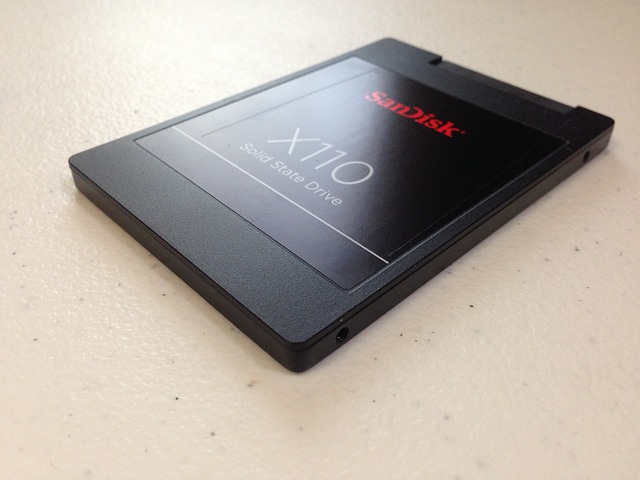Introduction
As organizations increasingly adopt cloud computing for their IT infrastructure, cloud server security becomes a paramount concern. Ensuring the security of cloud servers is essential to protect sensitive data and maintain business operations. This article outlines the critical aspects and best practices for securing cloud servers effectively.
Understanding Cloud Server Security
Cloud server security involves a combination of technologies, policies, controls, and services deployed to protect data, applications, and infrastructure associated with cloud computing. The nature of cloud environments—whether public, private, or hybrid—implies specific security challenges that differ from traditional data centers.
Best Practices for Securing Cloud Servers
- Shared Responsibility Model
Cloud service providers (CSPs) like AWS, Azure, and Google Cloud follow a shared responsibility model. While CSPs manage the security of the cloud infrastructure, customers are responsible for securing data and applications within the cloud. - Securing the Perimeter
Implement strong perimeter defenses by using firewalls, intrusion detection systems (IDS), and intrusion prevention systems (IPS). Multilayer security strategies, including network segmentation and DDoS protection, help safeguard against external threats. - Identity and Access Management (IAM)
Employ comprehensive identity and access management strategies to control user access to cloud resources. Implement role-based access control (RBAC) and the principle of least privilege to minimize access risks. - Data Encryption
Encrypt data both at rest and in transit to ensure confidentiality and integrity. Leveraging CSPs’ built-in encryption services and secure protocols is critical for protecting sensitive information. - Continuous Monitoring and Logging
Enable logging and real-time monitoring across cloud deployments to detect and respond to security incidents promptly. Log management solutions help in auditing and forensics by providing insights into system activities. - Regular Vulnerability Assessment
Conduct regular vulnerability assessments and penetration testing to identify potential security gaps. This proactive approach allows organizations to address vulnerabilities before they can be exploited. - Compliance and Governance
Adhere to industry-specific compliance standards and regulatory requirements. Establish governance frameworks to direct organizational operations within cloud environments effectively.
Implementing Security Policies
Organizations should implement cloud security policies that establish standards for deploying and managing workloads. For example, policies can dictate network access restrictions or specify permissible data storage locations, ensuring that security is embedded into every layer of the cloud stack.
Incident Response Planning
Having a well-defined incident response plan is crucial for mitigating the impact of security breaches. An incident response plan outlines specific roles and responsibilities, ensuring that security teams can act swiftly and efficiently in the event of a cyberattack.
Summery
Cloud server security is a dynamic discipline that requires a multi-faceted approach to address the unique challenges posed by cloud environments. By understanding the shared responsibility model and implementing robust security practices, organizations can enhance their resilience to cyber threats, protect their data, and maintain the integrity and availability of their cloud-based operations. As the threat landscape evolves, continuous adaptation and vigilance are necessary to secure cloud servers effectively.
What are common threats to cloud servers?
Cloud servers face a variety of threats that can compromise their security, integrity, and availability. Understanding these common threats is crucial for organizations to effectively secure their cloud environments. Here are some of the most prevalent threats to cloud servers:
- Data Breaches: Unauthorized access to sensitive data is a significant concern. Breaches can occur due to misconfigured settings, vulnerabilities in software, or successful phishing attacks targeting credentials.
- Account Hijacking: If attackers gain access to cloud account credentials, they can manipulate, steal, or delete assets within the cloud environment. Account hijacking is often the result of poor password management or successful social engineering attacks.
- Insider Threats: Employees or contractors with malicious intent or negligence can misuse their access to cloud resources to steal data or disrupt operations. Insider threats can be challenging to detect and mitigate.
- Denial of Service (DoS) and Distributed Denial of Service (DDoS) Attacks: These attacks aim to make cloud services unavailable by overwhelming them with a flood of illegitimate requests, affecting performance and accessibility.
- Insecure APIs: Cloud services often expose application programming interfaces (APIs) for integration and management. Insecure APIs can be exploited by attackers to gain unauthorized access or manipulate cloud resources.
- Misconfiguration: Misconfigured cloud services, such as improperly set access controls or exposed storage buckets, are a common vulnerability that can lead to unauthorized data exposure or access.
- Malware: Cloud environments are susceptible to malware, including ransomware, which can encrypt critical data or disrupt services until a ransom is paid.
- Data Loss: While not always malicious, data loss can occur due to accidental deletion, inadequate backup processes, or physical issues within the data centers hosting the cloud infrastructure.
- Lack of Due Diligence: Failure to thoroughly evaluate and understand the security capabilities and the terms of service of cloud providers can lead to adopting services that do not meet necessary security standards.
- Advanced Persistent Threats (APTs): APTs involve prolonged and targeted cyberattacks where attackers infiltrate the network and remain undetected to steal data or monitor activities over time.
To mitigate these threats, organizations should implement comprehensive security strategies, including strong access controls, encryption, regular security assessments, and employee training on security best practices. Additionally, partnering with reputable cloud service providers that offer robust security features can enhance the overall security posture.
Which tools can help monitor cloud server vulnerabilities?
To effectively monitor and address cloud server vulnerabilities, organizations can leverage a variety of security tools and services. Here are some common tools that can help in this endeavor:
- Cloud Security Posture Management (CSPM) Tools:
- Examples: Prisma Cloud, Trend Micro Cloud One, Aqua Security
- These tools analyze cloud configurations and identify misconfigurations, policy violations, and other security risks across cloud environments.
- Cloud Infrastructure Entitlement Management (CIEM) Tools:
- Examples: Ermetic, Sonrai Security, Palo Alto Networks Prisma Cloud
- CIEM tools help manage and monitor user and service account permissions, ensuring the principle of least privilege is applied in the cloud.
- Cloud Workload Protection Platforms (CWPP):
- Examples: Trend Micro Deep Security, Symantec Cloud Workload Protection, Palo Alto Networks Prisma Cloud
- CWPP solutions provide visibility, security controls, and threat protection for cloud-based workloads, including virtual machines and containers.
- Cloud Access Security Brokers (CASB):
- Examples: Netskope, Symantec CASB, Cisco Cloudlock
- CASB tools monitor and control user access to cloud applications, enforcing security policies and detecting anomalies.
- Vulnerability Scanners:
- Examples: Tenable.io, Qualys Cloud Platform, Rapid7 InsightVM
- These tools scan cloud infrastructure and applications to identify vulnerabilities, misconfigurations, and potential entry points for attackers.
- Security Information and Event Management (SIEM) Tools:
- Examples: Splunk, IBM QRadar, Microsoft Sentinel
- SIEM solutions aggregate and analyze security-related data from various sources, enabling the detection of security incidents and compliance monitoring.
- Cloud-Native Security Platforms:
- Examples: AWS Security Hub, Azure Security Center, Google Cloud Security Command Center
- These platforms provide centralized visibility, security controls, and threat detection capabilities for cloud environments.
- Penetration Testing and Ethical Hacking Tools:
- Examples: Kali Linux, Metasploit, Burp Suite
- These tools help organizations simulate real-world attacks and identify vulnerabilities in their cloud infrastructure and applications.
By leveraging a combination of these tools, organizations can gain comprehensive visibility into their cloud security posture, detect and respond to threats, and continuously monitor and address vulnerabilities in their cloud environments.



